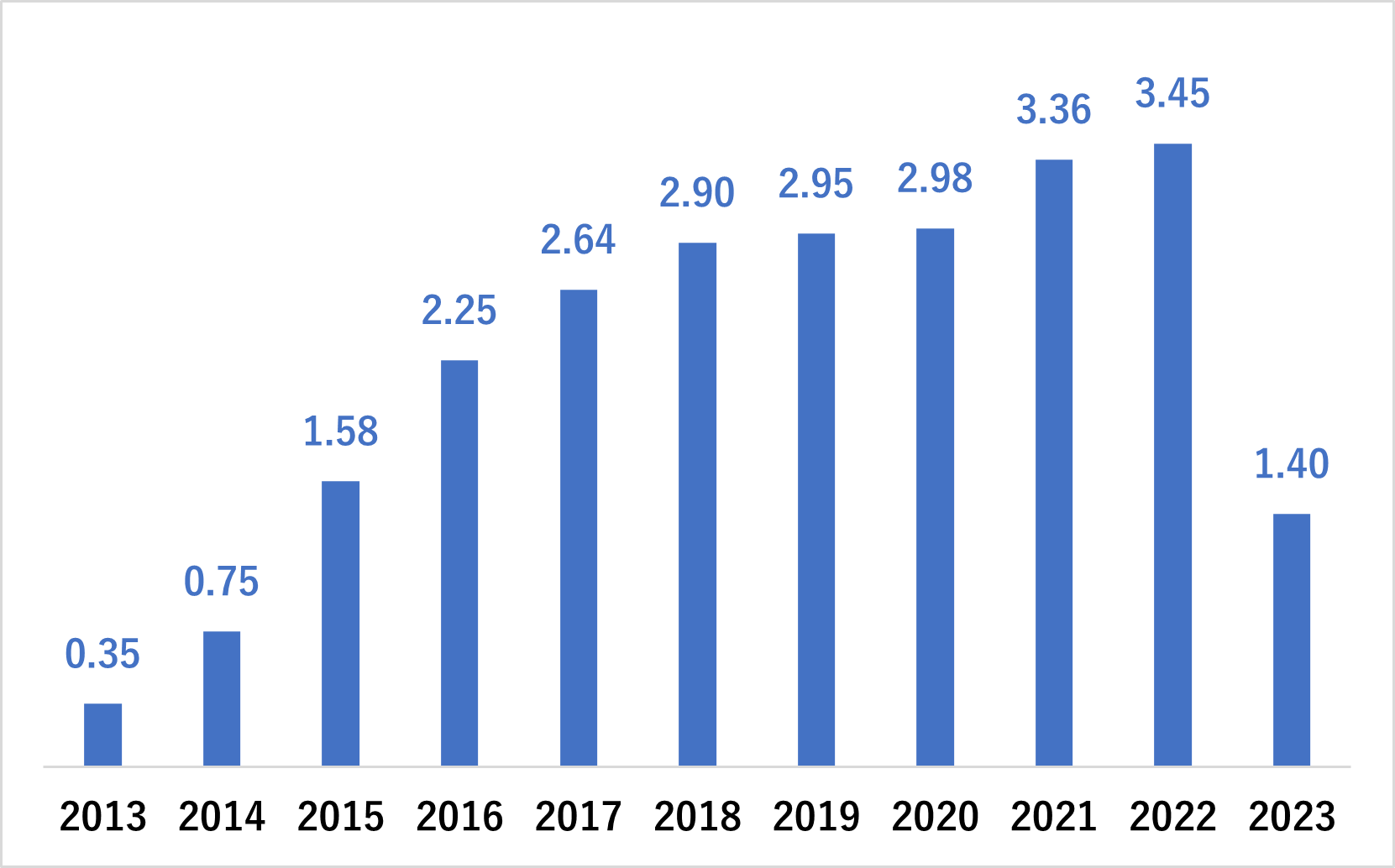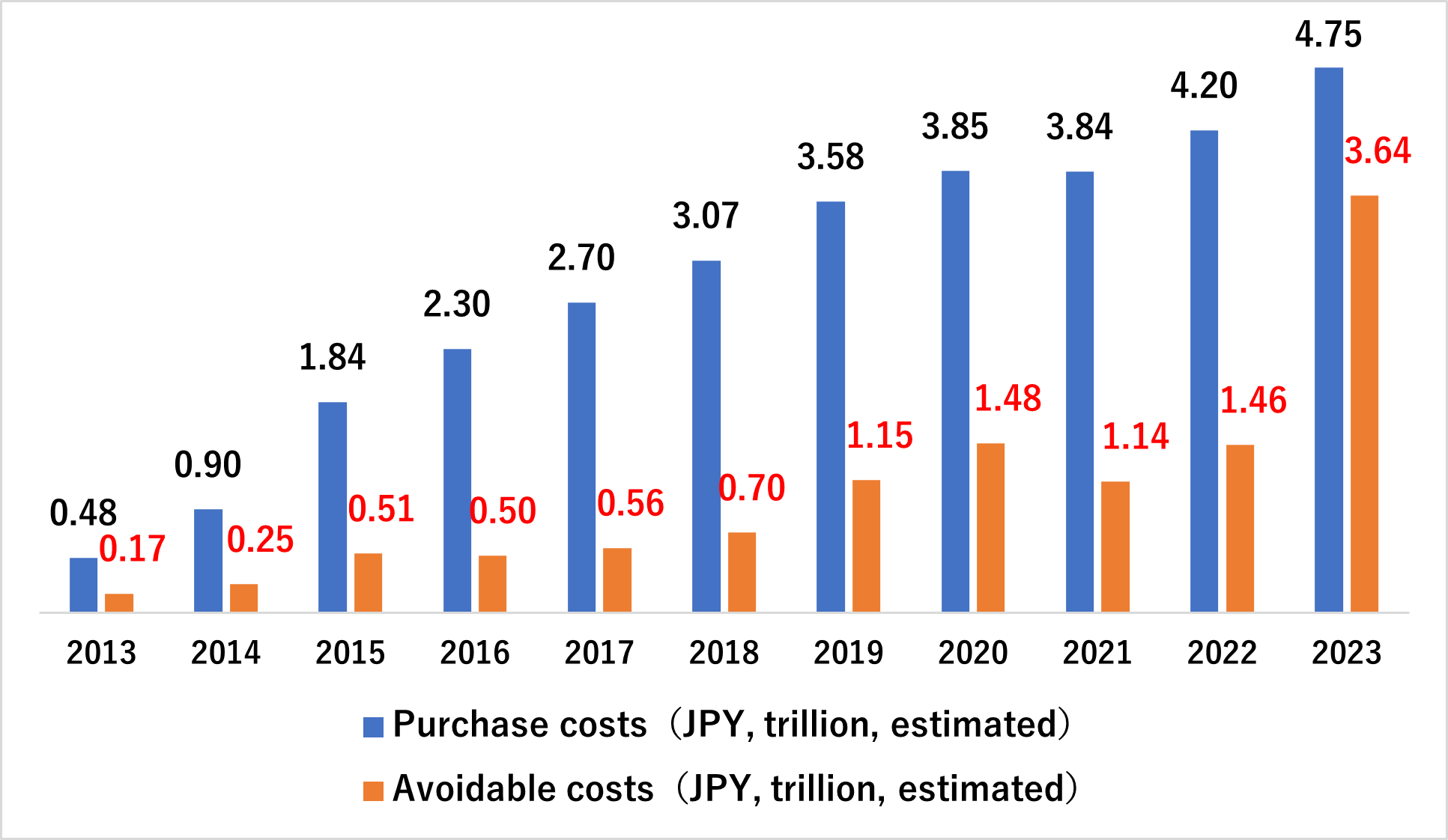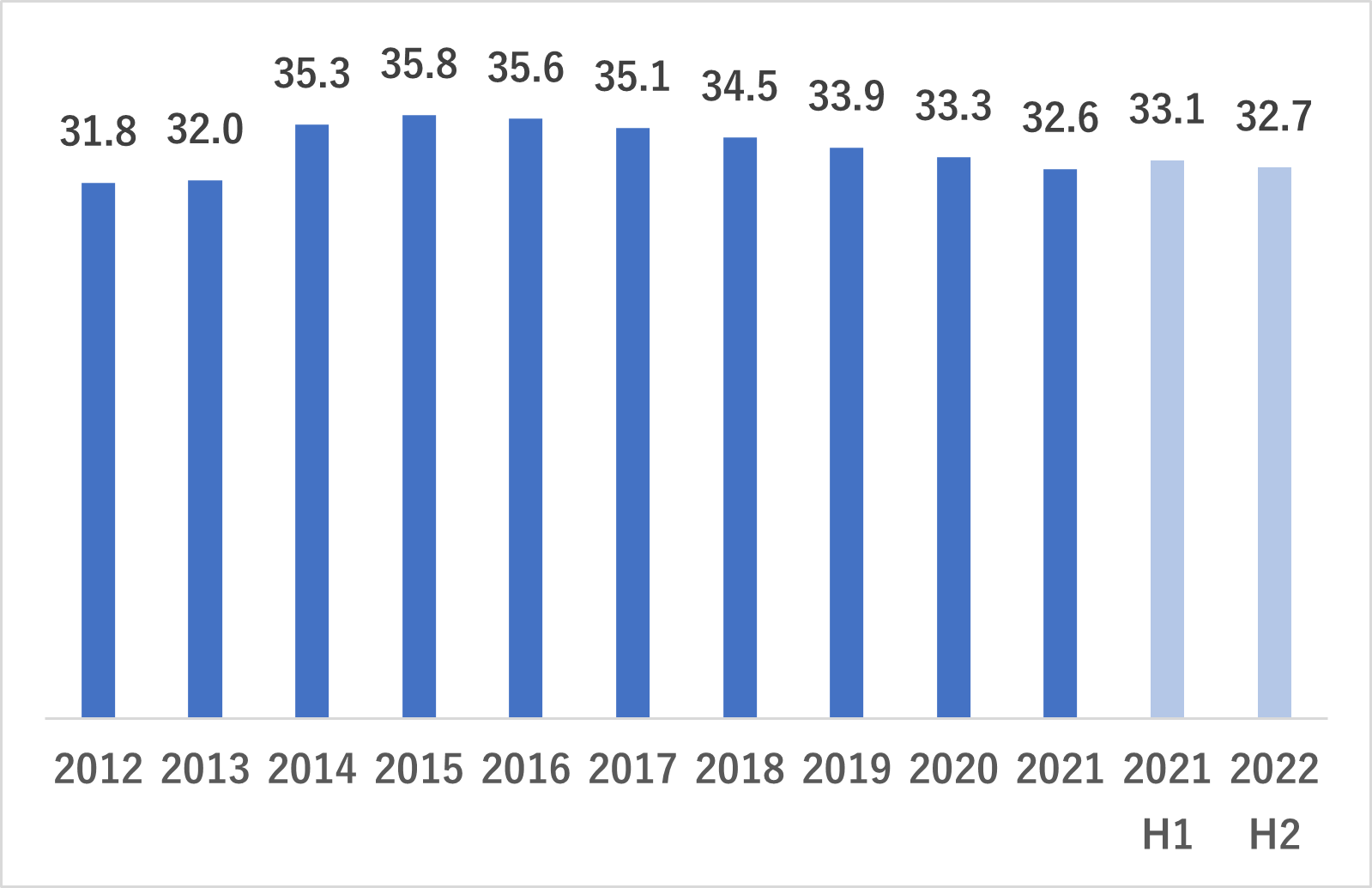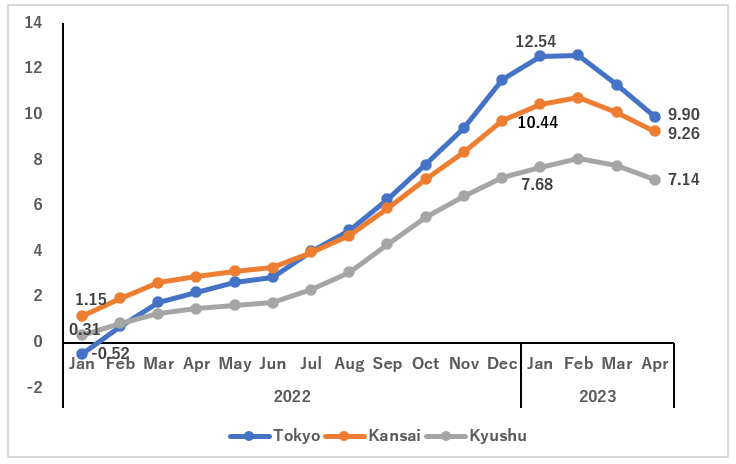(Japanese original published on 28 March 2023)
The Ministry of Economy, Trade and Industry (METI) has determined the renewable energy surcharges unit price (surcharges for promoting renewable electricity generation) for FY2023, along with the purchase prices of the feed-in tariff (FIT) and feed-in premium (FIP) for FY2023 and beyond. The renewable energy surcharges unit price will be 1.40 yen/kWh, a significant decrease from 3.45 yen/kWh in the previous year (Figure 1), and to be applied for electricity tariffs from May 2023. This is good news for electricity consumers.
Figure 1: Trends of renewable energy surcharges unit price (yen/kWh, by fiscal year)

The renewable energy surcharges unit price, which has been rising since fiscal year 2013, the year after the start of the FIT system, decreases for the first time. And the decrease is more than 50%. While the gradual decline in the purchase prices under the FIT is one factor, the biggest factor is the sharp rise in the wholesale market prices (spot prices) at the Japan Electric Power Exchange (JEPX), which is used as a reference when calculating the renewable energy surcharges unit price.
The unit price is calculated every year by subtracting the avoidable costs and administrative costs from the total purchase costs assumed for the year, and then dividing it by the expected amount of electricity to be sold (Figure 2).
Figure 2: Calculation of the renewable energy surcharges unit price (FY2023)

The avoidable costs are assumed if the same amount of electricity purchased under the FIT or FIP were procured through thermal power generation, etc. Since FY2021 the avoidable costs are calculated based on the actual 30-minute spot prices at JEPX (fuel costs are considered until FY2020).
Because the spot prices increased significantly in FY2022 in response to higher fossil fuel prices, the avoidable costs assumed for FY2023 will increase by a factor of 2.5 from the previous year (Figure 3). As a result, the cost to be recovered through the renewable energy surcharges has decreased significantly. Fluctuations in the spot prices will continue to affect the renewable energy surcharges for each fiscal year. However, unless the spot prices return to the low levels of FY2020 and before, the renewable energy surcharges unit price will not rise to a level exceeding 3.45 yen/kWh for FY2022.
Figure 3: Trends of purchase costs and avoidable costs (by year)

Average Purchase Price Peaked in FY2015 and Declined
The total purchase costs are expected to increase in the future, due to an increase of electricity purchased under the FIT and FIP, while reducing thermal power generation. The effect of reducing the use of fossil fuels and carbon emissions will be significant.
In the long run, the increase of the purchase costs will settle down, as the purchase prices per kWh will decline: the average purchase price under FIT and FIP peaked at 35.8 yen in FY2015 and has continued to decline (Figure 4). This is the effect of having reduced the purchase prices, particularly for solar power generation. Since the average purchase price will continue to decline in FY2022 and beyond, the total purchase costs will not increase as much as before even if the amount of electricity purchased increases.
Figure 4: Trends of average purchase price (actual, yen/kWh, by fiscal year)

For electricity consumers, the fuel cost adjustment charge is a bigger problem than the renewable energy surcharges: the fuel cost adjustment unit price, which is added to electricity tariffs, rose significantly during January 2022 to January 2023 (Figure 5). The fuel cost adjustment unit price in the Tokyo area increased by more than 13 yen in one year. Even in the Kyushu area where the increase was relatively small, it exceeded 7 yen. Since the beginning of 2023 the fuel cost adjustment unit price has been decreasing. Although it is difficult to predict future trends in fossil fuel prices, it is unlikely that the fuel cost adjustment unit price will stabilize at a low level in the future.
Figure 5: Fuel cost adjustment unit price (high voltage, yen/kWh)

Solutions for consumers to procure electricity unaffected by fossil fuel costs are on-site power generation from renewable energy sources and corporate PPAs (Power Purchase Agreements). Both methods provide renewable electricity for the long term and reduce the electricity procurement costs while continuing to use electricity without carbon emissions. From an economic and climate change perspective, the time has come for consumers to take actions in expanding renewable electricity procurement.






